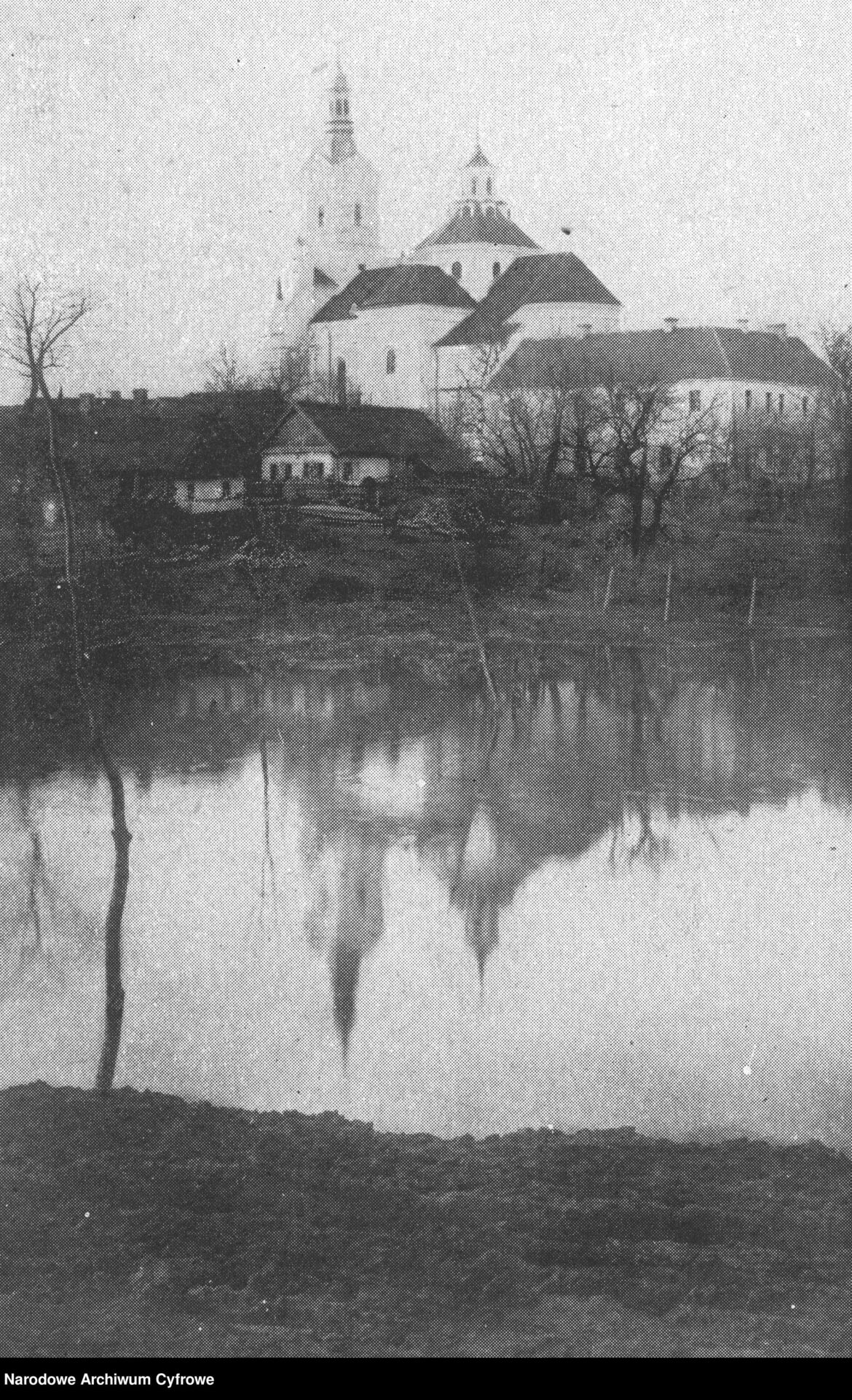Governor Stiepan Stiepanowicz Gromieka, an Orthodox bigot whose daughter became the abbess (igumeni) of the monastery, in 1875 took away from Catholics the baroque collegiate church of St. Anna in Kodeń and handed it over to the Orthodox priests. In the 19th century, this part of Poland was ruled by Russia and when Poland regained its independence in 1918, the Catholics retaliated – all the Orthodox churches in the town were closed. Tensions between religious groups in those parts were marked by the continuous struggles between the Orthodox and Catholics, bypassing the people of the Mosaic faith.
Self-government of shtetl
All this time, the Jews used to attend a wooden synagogue, that later turned into a yeshiva after building a brick building. They had their own self-government. The religious community included all men after the age of 25, as long as they had lived in Kodeń for at least one year. The community supported a rabbi and a deputy rabbi with their families. Shohet, earned his living running as a kosher butcher. Rabbi Moshe Arje Fryduam led the community from the times of Tsar Nicholas II until his death in 1926. His duties were taken over by Zajdel Rabinowicz. All Hebrews turned to him for advice. He settled disputes and his verdicts were final.
The Israelites launched the People’s Bank, which, however, did not survive the economic collapse of the Great Depression. Every third inhabitant of Kodeń was of Judaism faith – 600 persons in total. They voted for the Zionists and the religious Aguda, and the Bund was active there as well. They were traders, craftsmen (tailors and shoemakers) and shop owners of 21 shops out of 26 stores in Koden. The anonymous pilgrim stated “Christian (Polish stores) are very tiny and poor. You rarely get what you want in them. They only sell products in small quantities. Therefore, whoever wants to buy more or be sure that he will get the desired items right away, goes to the Jewish shop. They have everything and always”.
Bakers in kippahs
In 1927, the Catholic miraculous painting of Our Lady of Kodeń returned to the town. The 17th-century canvas by an unknown Spanish painter was brought from across the Pyrenees by the prince Mikołaj Sapieha who was vividly described by the well-known writer Zofia Kossak-Szczucka in the novel “Blessed guilt”, published in 1924. The triumphant return of the image, welcomed by Archbishop Adam Sapieha, revived the splendour of the Sanctuary of Our Lady of Kodeń. The town was haunted by crowds of pilgrims.
The Oblates, the caretakers of the basilica, decided that the consecrated hosts should be baked by the hands of fellow believers. Priorly, they bought them in one of the three city bakeries run by Jews. With the support of Mrs Płandowska, who had saved some dollars while working in America, Stanisław Radecki launched his bakery in the spring of 1938. Despite regular orders from the monastery and the Agricultural School in Kołpino and the support of the starost, the baker was not sure if he survived in the market. He decided on a trial, five-year lease. Koden residents continued to visit Jewish bakeries, where they were attracted by the smell of baked challah, bagels, matzah and recently, host wafer. On holiday days, they dined at Bronisław Sadzak’s restaurant or Zelman Blumenkranc’s inn, who jointly share the gastronomic market. Polish craftsmen sold their products in their Jewish neighbors’ shops, always solvent-borne by the kehilla’s credit. The Kodeniaks focused on activities for which they had a predilection.
The harmonious neighborhood of Poles and Jews was interrupted by World War II. In September 1939, the Wehrmacht entered the town. The full power was executed by the Germans. They ordered the Israelites to live in designated 30 houses around the market square. They forced them to work as slaves for 10-12 hours a day. Germans ordered the Jews to demolish the kirkut (Jewish cemetery) in order to use matzevot to pave the road. Another humiliation was the demolition of the synagogue and the yeshiva. In the fall of 1942, the Germans drove all the Jews from Kodeń to a larger ghetto and before the end of the year, they deported Koden Jews to the gas chambers of the Treblinka extermination camp.





